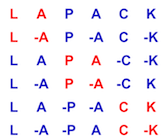204 SUBROUTINE slasd1( NL, NR, SQRE, D, ALPHA, BETA, U, LDU, VT, LDVT,
205 $ idxq, iwork, work, info )
213 INTEGER INFO, LDU, LDVT, NL, NR, SQRE
217 INTEGER IDXQ( * ), IWORK( * )
218 REAL D( * ), U( ldu, * ), VT( ldvt, * ), WORK( * )
226 parameter ( one = 1.0e+0, zero = 0.0e+0 )
229 INTEGER COLTYP, I, IDX, IDXC, IDXP, IQ, ISIGMA, IU2,
230 $ ivt2, iz, k, ldq, ldu2, ldvt2, m, n, n1, n2
247 ELSE IF( nr.LT.1 )
THEN
249 ELSE IF( ( sqre.LT.0 ) .OR. ( sqre.GT.1 ) )
THEN
253 CALL xerbla(
'SLASD1', -info )
280 orgnrm = max( abs( alpha ), abs( beta ) )
283 IF( abs( d( i ) ).GT.orgnrm )
THEN
284 orgnrm = abs( d( i ) )
287 CALL slascl(
'G', 0, 0, orgnrm, one, n, 1, d, n, info )
288 alpha = alpha / orgnrm
293 CALL slasd2( nl, nr, sqre, k, d, work( iz ), alpha, beta, u, ldu,
294 $ vt, ldvt, work( isigma ), work( iu2 ), ldu2,
295 $ work( ivt2 ), ldvt2, iwork( idxp ), iwork( idx ),
296 $ iwork( idxc ), idxq, iwork( coltyp ), info )
301 CALL slasd3( nl, nr, sqre, k, d, work( iq ), ldq, work( isigma ),
302 $ u, ldu, work( iu2 ), ldu2, vt, ldvt, work( ivt2 ),
303 $ ldvt2, iwork( idxc ), iwork( coltyp ), work( iz ),
314 CALL slascl(
'G', 0, 0, one, orgnrm, n, 1, d, n, info )
320 CALL slamrg( n1, n2, d, 1, -1, idxq )
subroutine slasd1(NL, NR, SQRE, D, ALPHA, BETA, U, LDU, VT, LDVT, IDXQ, IWORK, WORK, INFO)
SLASD1 computes the SVD of an upper bidiagonal matrix B of the specified size. Used by sbdsdc...
subroutine slascl(TYPE, KL, KU, CFROM, CTO, M, N, A, LDA, INFO)
SLASCL multiplies a general rectangular matrix by a real scalar defined as cto/cfrom.
subroutine slasd3(NL, NR, SQRE, K, D, Q, LDQ, DSIGMA, U, LDU, U2, LDU2, VT, LDVT, VT2, LDVT2, IDXC, CTOT, Z, INFO)
SLASD3 finds all square roots of the roots of the secular equation, as defined by the values in D and...
subroutine xerbla(SRNAME, INFO)
XERBLA
subroutine slasd2(NL, NR, SQRE, K, D, Z, ALPHA, BETA, U, LDU, VT, LDVT, DSIGMA, U2, LDU2, VT2, LDVT2, IDXP, IDX, IDXC, IDXQ, COLTYP, INFO)
SLASD2 merges the two sets of singular values together into a single sorted set. Used by sbdsdc...
subroutine slamrg(N1, N2, A, STRD1, STRD2, INDEX)
SLAMRG creates a permutation list to merge the entries of two independently sorted sets into a single...

